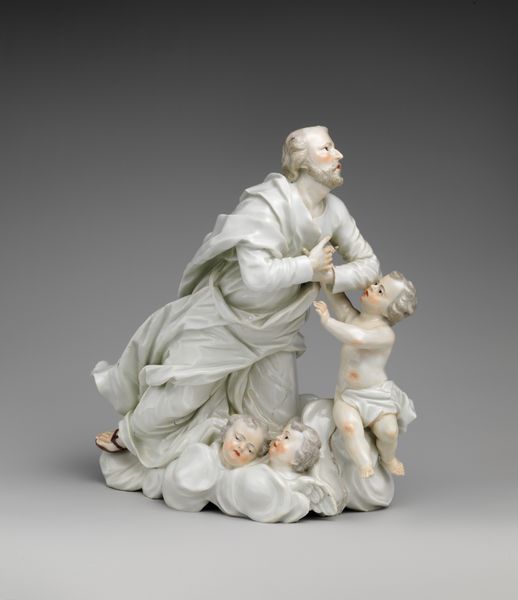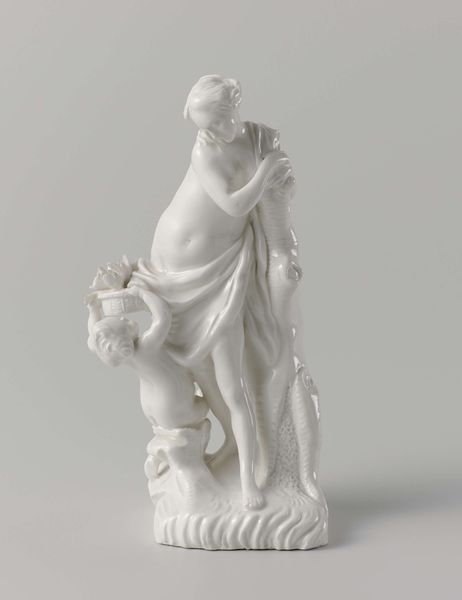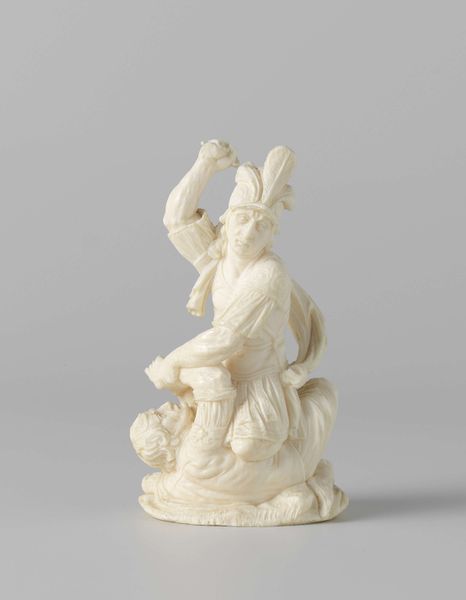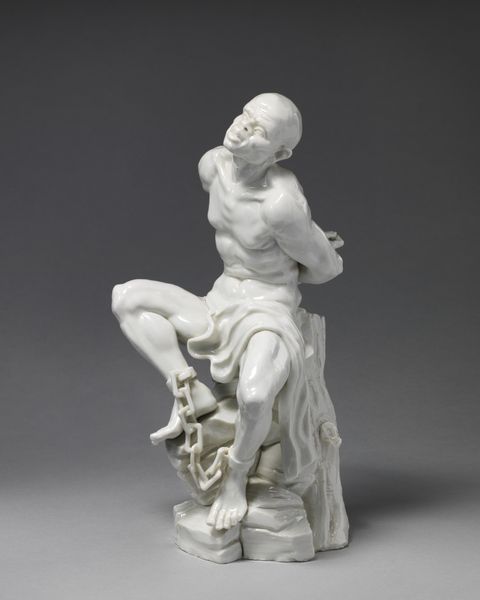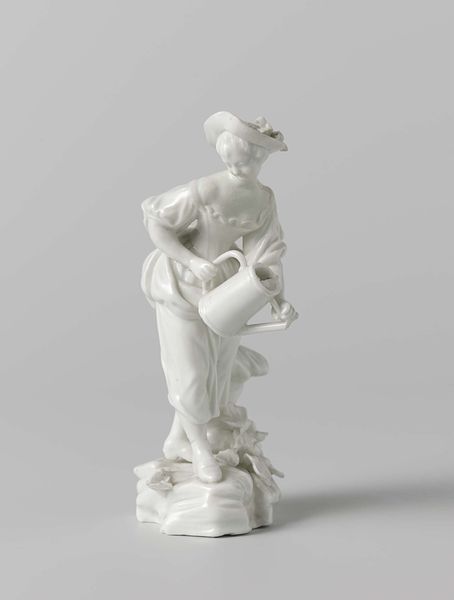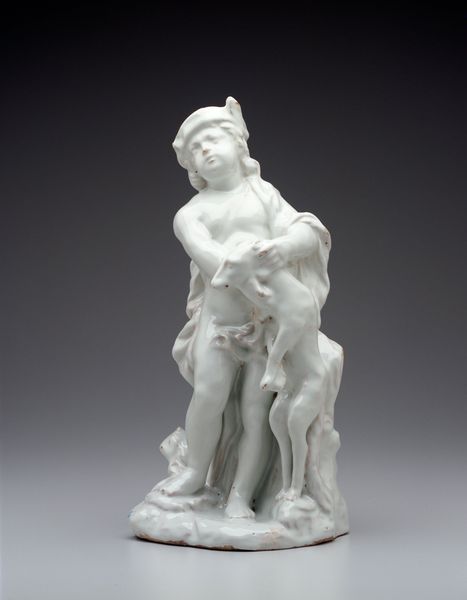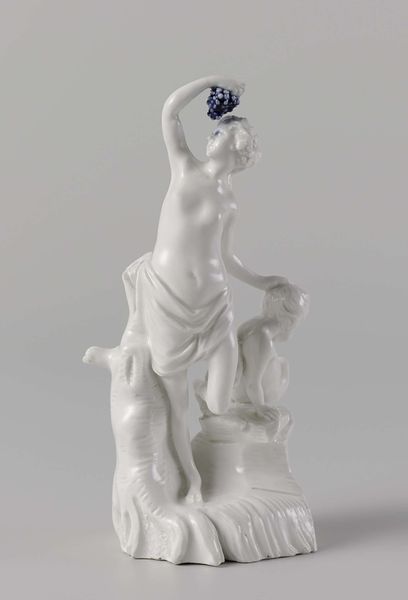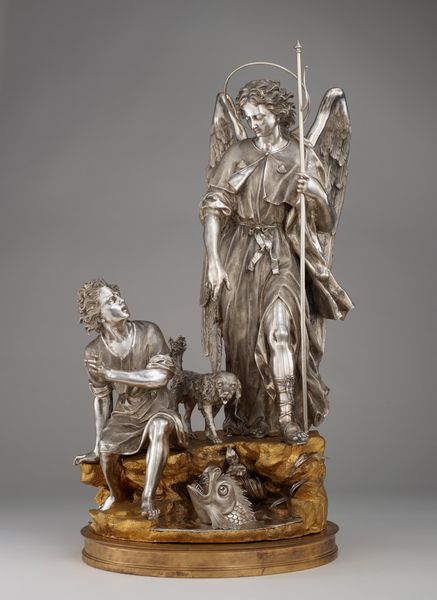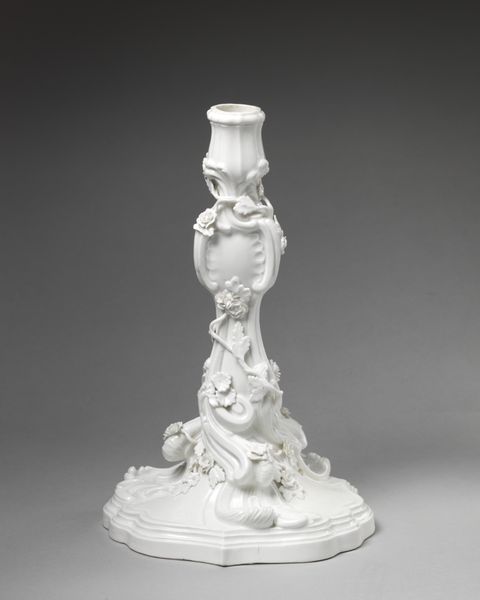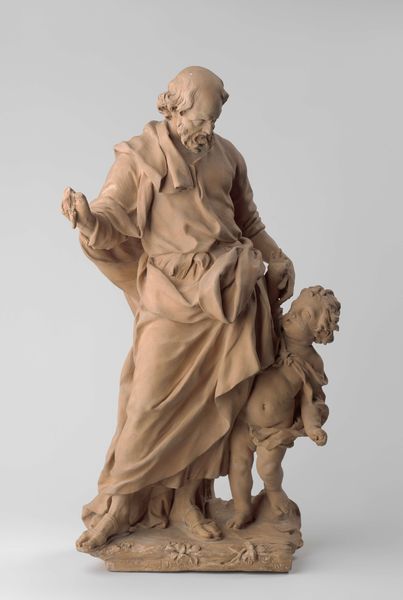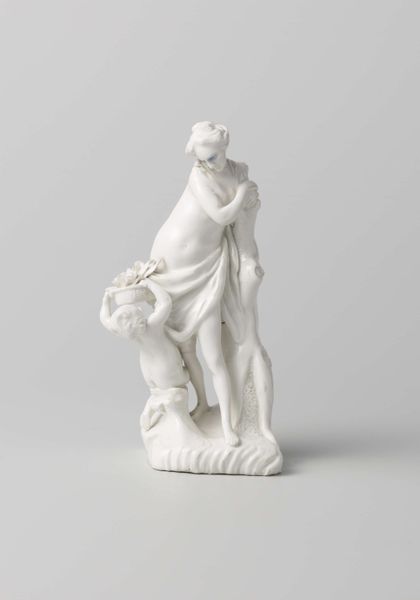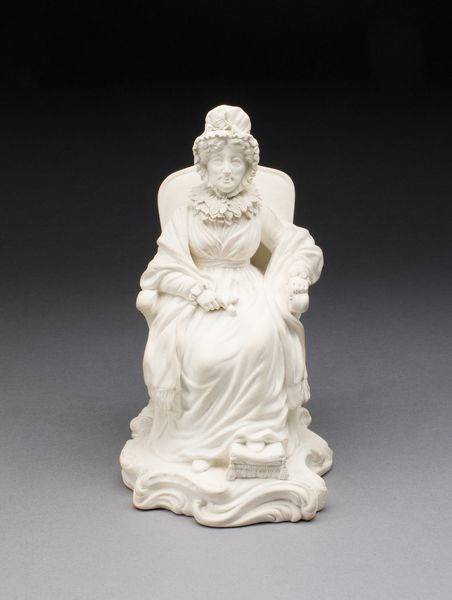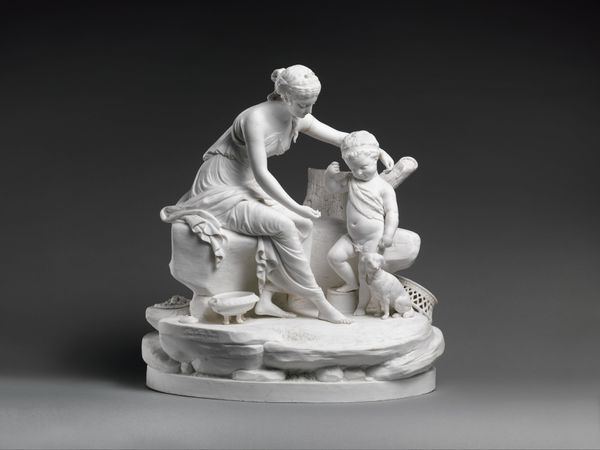
John Wilkes (1727–1797), M.P. for Westminister ("Liberty Wilkes") 1760 - 1770
0:00
0:00
ceramic, porcelain, sculpture
#
portrait
#
ceramic
#
porcelain
#
sculptural image
#
figuration
#
sculpture
#
history-painting
#
decorative-art
#
rococo
Dimensions: Height: 12 in. (30.5 cm)
Copyright: Public Domain
Curator: Oh, isn't he darling? So neat and self-assured, all in porcelain. I just want to give his powdered wig a playful pat. Editor: Well, before we get carried away with the wig, perhaps we should provide some context. This is a porcelain sculpture of John Wilkes, the famed Member of Parliament for Westminister, dating from 1760 to 1770 and attributed to the Chelsea Porcelain Manufactory. He was a radical, a journalist, and a staunch advocate for liberty. Curator: Liberty indeed! But more than his politics, I’m taken with the composition, don't you think? That little cherub at his feet! Is it a metaphor? Some sort of classical flourish? Or is someone playing a joke on someone important? Editor: Perhaps a bit of all three! That cherub leans on a plinth inscribed with "LIBERTY." Wilkes was famously imprisoned for libeling the king, so that cherub symbolizes the ideals for which he fought—freedom of speech and the press. Rococo sculpture was also all about imbuing real subjects with heroic and noble imagery, don't you think? It's a commentary on celebrity too, a popular and controversial politician captured in miniature porcelain. Curator: Miniature... until you place him on a mantelpiece. Suddenly, his presence expands tenfold! But porcelain... What a medium for defiance! Isn't that wonderful? Porcelain feels fragile. This rebellious character immortalized in delicate curves. It almost undermines the very essence of protest, I would say. Editor: Or maybe it makes it all the more pointed! Porcelain, then as now, signaled luxury and elitism. To cast Wilkes, who championed the common person, in such a medium is, in itself, a political statement. Moreover, think about how easily porcelain breaks... Like freedom, liberty. And maybe like the promises of powerful politicians. Curator: Goodness, you’ve put a much more profound spin on it than I had considered, haha! So much more than a beautiful statuette of an adorable revolutionary! Now, what to make of the empty plinth beside him? Any suggestions there, madam? Editor: Ah, I'd suggest taking the time to really consider the silences in this little sculpture, and perhaps thinking more carefully about the limits and exclusions inherent within the term "liberty" itself, then and now. That absence suggests many possibilities to ponder! Curator: Well then, there’s a challenge if ever I’ve heard one! This darling statuette just keeps on giving, doesn't he?
Comments
No comments
Be the first to comment and join the conversation on the ultimate creative platform.
